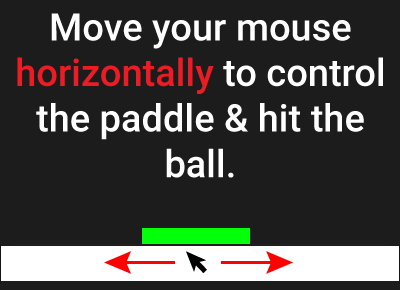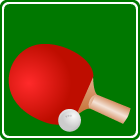


3 scores max per player; No foul language, show respect for other players, etc.
Name | Score | Date | ||
|---|---|---|---|---|
| 1 | ||||
| 2 | ||||
| 3 | ||||
| 4 | ||||
| 5 | ||||
| 6 | ||||
| 7 | ||||
| 8 | ||||
| 9 | ||||
| 10 |

Game: PONG
Aim: Break the bricks, score points
Method:
Use your mouse or tap in the white bar to move the paddle horizontally to bounce the ball up the screen. Answer questions when you break the white bricks, score big points with the yellow bricks.
Your final score is based on correct answers, bricks broken and time taken.

anonymous 🦊
"Two variables"
PONG game to practice
'Polarity, strength of correlation' for 7th grade
7th grade / Statistics / Two variables / Scatter graphs / Polarity, strength of correlation
Polarity and strength of correlation for scatter graphs
Scatter graphs use dots or diagonal crosses to represent values that correlate the relationship between two variables. The scatter graph will indicate the degree to which the two variables are correlated (linked or related).
For instance, a scatter graph plotting altitude (x-axis) against Oxygen concentration (y-axis) will indicate a strong correlation between these two variables because Oxygen concentration reduces with altitude (the reason climbers can suffer from altitude sickness). On the other hand, a scatter graph plotting eye colour against exam results will show no correlation because these two variables have no causal relationship.
The polarity of a correlation can be characterised as "positive" or "negative". This indicates whether an imaginary straight line drawn through the points (a line of best fit) rises to the right (positive - as the x-axis variable increases, so does the variable on the y-axis) or falls to the right (negative - as the x-axis value increases, the y-axis variable decreases). So, thinking about our example of altitude plotted against Oxygen concentration, we will see a negative correlation because the concentration decreases as the altitude increases. A positive correlation would be seen if we plotted a child's age against shoe size: as their age increases, so does their shoe size.
The strength of a correlation can be characterised as "strong" or "weak". A strong correlation will be indicated on a scatter graph by points that closely follow a line of best fit. A weak correlation will show points that are more loosely concentrated around a line of best fit.
In this topic you are asked to decide which of the descriptions provided best describe the correlation between the variables plotted on the x and y axes. The possible options are:
- Strong positive correlation
- Strong negative correlation
- Weak positive correlation
- Weak negative correlation
- No correlation
With our Pong math game you will be practicing the topic "Polarity, strength of correlation" from 7th grade / Statistics / Two variables / Two variables. The math in this game consists of 16 questions that ask you to identify the polarity and strength of any linear correlation for each of the given scatter graphs.

In our version of Pong/Breakout, there are 3 types of bricks for you to break: green bricks are worth just 2 points; yellow bricks are worth a whopping 50 points; breaking white bricks, which are worth 10 points, wins you a math question from the topic you have chosen.
You start with 5 lives. If the ball goes below the paddle, you lose a life and 200 points. The game ends when you answer all 10 questions or lose all your lives.
Notes
- This version of Pong is a one player game to learn or revise math
- Our PONG for math is a scoring game - play a few times and set a personal best score!
- Addictive! You may end up trying to avoid the white bricks so that you can play for longer...
UXO * Duck shoot * The frog flies * Pong * Cat and mouse * The beetle and the bee
Rock fall * Four in a row * Sow grow * Choose or lose * Mix and match

Latest leaderboard entries: Pong




How to play PONG to practice
'Polarity, strength of correlation' for 7th grade

- Select the PONG game from the games selection page.
- On the settings page there are brief instructions on how to play.
- Click on PLAY to enter the game screen.
- The clock starts when the bell rings.
- Move your mouse (or finger tap or drag in the white bar for touch screens) to move your paddle left and right.
- Knock the ball back up the screen to break the bricks.
- You start with 1000 points and 5 lives.
- You lose 1 point every 2 seconds.
- 200 points are deducted from your score for each life lost
- Green bricks score 2 point, yellow bricks score 50 points, white bricks score 10 points and open the question screen.
- For each question click/tap on the correct answer or enter it using the keyboard.
- Wrong answers lose you 25 points but correct answers win you 50 points.
- Continue breaking bricks and answering questions until you have cleared all the question bricks.
- The game also ends if you lose all 5 of your lives.










